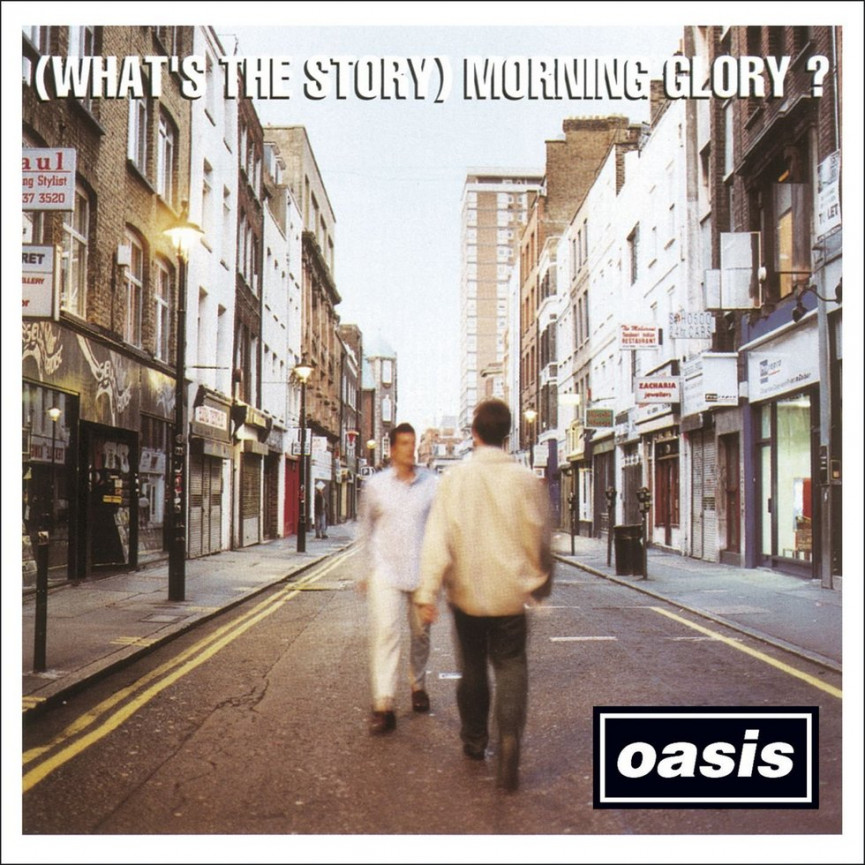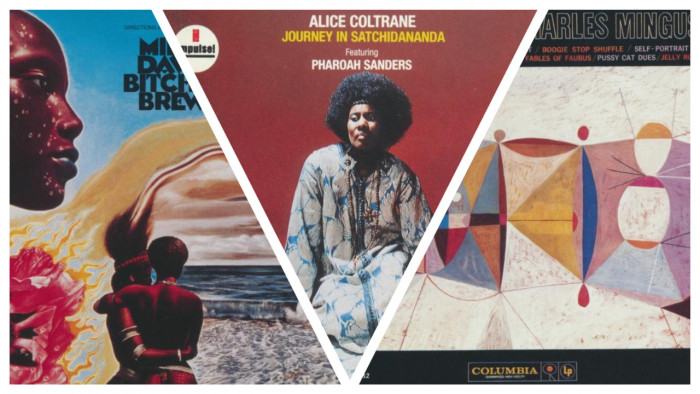25 things you (probably) didn't know about A Northern Soul
Some fascinating facts about the Verve's 1995 classic


A Northern Soul was a crucial record in the evolution of the Verve. After the psychedelia of the Wigan band's 1993 debut A Storm In Heaven, they opted for a rockier, denser sound for the 1995 follow-up.
Weighing in at a mighty 64 minutes long, at the time the album was a moderate commercial success, but it gained them a legion of devoted fans and is now considered an all-time classic.
Recording the album was such a torturous process that the band split up not long after its release - but they later reformed to release the multi-million selling Urban Hymns, cementing their reputation as a truly legendary British band.
Read on to discover 24 fascinating facts about A Northern Soul.
A Storm In Heaven and A Northern Soul are reissued on 9 September in super deluxe box set editions, gatefold vinyl and as digital editions, featuring rare and previously unreleased material. Head here to preorder the physical box set and here to preorder digitally
Producing classics

1995 was a remarkable year for A Northern Soul producer Owen Morris. As well as making the Verve's classic, he also oversaw Oasis' (What's The Story) Morning Glory.
Mutual back-slapping

The song A Northern Soul was dedicated to Oasis guitarist Noel Gallagher after the bands became friends when they supported the Verve on an early tour, while Noel dedicated Cast No Shadow "to the genius of Richard Ashcroft" when (What's The Story) Morning Glory? came out later in the year.
Commenting on the lyrics of Cast No Shadow, Ashcroft once said, “It means I’m like Dracula.”
Special guest

Not to be outdone by his brother, Liam Gallagher actually appears on the record, being credited with 'handclaps' on History.
Breaking the charts

This Is Music was the first single to be taken from the album, and the first from the band to break the top 40, peaking at 35 in May 1995.
Heart on their sleeve

Brian Cannon of Microdot designed the covers of all 18 of the Verve's nineties-era releases. His favourite sleeve was A Storm In Heaven - "the best sleeve I have ever done, for anybody" - but his personal favourite actual album is A Northern Soul.
Projections of grandeur

The process of creating the artwork for A Northern Soul began with the band being photographed in black and white in a Manchester studio. The image was then hand-coloured and converted into a large format transparency. The final cover photo was then taken in a warehouse near London's Tower Bridge, where a sixteen-metre high version of the band's image was projected onto a wall - drummer Pete Salisbury is the person walking through the door.
Brian Cannon explains: “My way of working was just to immerse myself as much as possible into the band’s project. I’d listen to the words… and reflect that in all aspects of the sleeve… I was in the studio when they recorded [A Northern Soul].”
History lesson #1

The cover photographs for the artwork for the single History were shot in New York's Times Square.
Life Is Not a Rehearsal was actually the title of one of the B-sides of the single, which must have confused a few buyers.
History lesson #2

The main CD artwork for History shows the band standing under a cinema sign in Times Square which displays the words “All Farewells Should Be Sudden.”
Appropriately enough, this third and last single from the album was released on 18 September, shortly after the band had split up, just three months after the release of A Northern Soul.
Talented but tricky

Producer Owen Morris and the band's Nick McCabe had a difficult relationship during the recording of the album, with the latter's sensitive nature conflicting with the former's more easygoing personality. Nonetheless, Morris has said that McCabe was, "without a shadow of a doubt the most gifted musician I have ever worked with, but at the same time a complete and utter nightmare. He'll never play the same thing twice."
History lesson #3
The opening lyrics of History are based on the first two stanzas of William Blake's 1794 poem entitled London.
Blake's poem reads: I wander thro' each charter'd street/Near where the charter'd Thames does flow/And mark in every face I meet/Marks of weakness, marks of woe.
In every cry of every Man/In every Infants cry of fear/In every voice: in every ban/The mind-forg'd manacles I hear
Ashcroft's lyrics read: I wander lonely streets/Behind where the old Thames does flow/And in every face I meet/Reminds me of what I have run from
In every man, in every hand/In every kiss, you understand/That living is for other men/I hope you two will understand
Pure ecstasy

Recordings for the album seemingly began with a two-week ecstasy party before things started to take shape. Guitarist Nick McCabe explained: "When we went in we had no preconceived notion of what it was going to sound like. We just went in and played... and that's when you know you're playing really well, when you don't have to think about it. There were three weeks during the making of that record which I'd have to say were the best I've ever had in my life."
A lyrical man

Richard Ashcroft has talked through the lyrics for the record saying, "Each song is a northern soul going through different emotions. I hear this character all the way through the record; pretty pained, then elated, then arrogant. All facets of that personality are a northern soul. That's what I am."
He has also explained the role that a split with his girlfriend played in the creative process. "We were all working on the record and then I went off to London for about three months to sort some things out with my girlfriend at the time. Things didn't go so well, and I got really fucked up for about two of those months, both physically and mentally. When I got back, the strangest thing was that they were playing music that was precisely the way I was feeling and so the two just went together quite easily."
He also told MTV: "I broke up with someone I was with for six years. If I hadn't had the album I would have fallen down to the bottom."
How Soon Are You On Your Own?
On Your Own shares musical and lyrical similarities with The Smiths' legendary 1985 track How Soon Is Now? Major sevenths - a favourite of Johnny Marr and the boys - are used, and the line "You come in on your own and you leave on your own" is close to Morrissey's famous story of heading to a club and finding that "You stand on your own and you leave on your own".
However, Richard Ashcroft neglected to then write anything similar to The Smiths' famously miserablist ending: "And you go home, and you cry and you want to die".
Best Friends

A green 7" single featured an acoustic version of On Your Own, backed with the B-Side I See The Door. A small number of these were misprinted and instead featured the track Friends by Dutch band and Hut Records labelmates Daryll-Ann - who had actually previously toured with The Verve. Nearly all of these rogue versions were destroyed, but the few remaining copies are now collectors' items.
Balfron Tower
The outside shots of the video for This Is Music were filmed at the Balfron Tower, a 26-storey residential building which is part of the Brownfield Estate, in Poplar, in East London. There are also shots filmed on the Docklands Light Railway - which was presumably fairly handy, seeing as Poplar is a station on the line.
"Wigan Dungeon"

Richard Ashcroft has said that the band originally wanted to record the album in the Wigan rehearsal room that they had been working in.
He said: “Practising in a dungeon in Wigan for this record, you're devoid of any kind of fashion, or thought of 'This is what we should be doing'. Like a band that goes into the studio and plays the music they hear in their heads rather than what they read in magazines.”
They eventually headed to the Loco Studios in rural Wales with Owen Morris.
Mind Games
The strings on the opening of History are similar to the introduction of John Lennon's 1973 single Mind Games. The song was the first by the band to feature a string section.
Urban Jams
Come On, the bombastic closing track of Urban Hymns, and The Rolling People, were originally demoed for A Northern Soul. The working title of The Rolling People was Funky Jam.
Go Forth
Muhammad Ali was demoed for A Northern Soul, but didn't receive a release until appearing as a bonus track on the band's fourth record, the aptly-titled Forth.
Meanwhile Mover, a track which dated back to the A Northern Soul era, was released as a free download a week after their comeback single Love Is Noise, but was not included on the final album.
The NME weren't sure at the time

The NME issued cautious praise upon release of the album, with journalist Simon Williams awarding it 6/10, saying, “The Verve exude such a sense of astounding self-belief that they can almost convince you that even their more nonsensical moments should be cast in gold, carved in stone and treated with the utmost artistic respect.”
However, they later realised the brilliance of the record, ranking it as the 28th best album of all time in 2003 and the 13th best British album ever in 2006.
Self-confidence

The band themselves were in no doubt how good the record was. Drummer Pete Salisbury (above) said in 1995 that, "[A Northern Soul is] one of the best albums in the last 10 or 15 years. As good as Nirvana's or the [Stone] Roses".
History lesson #4

Richard Ashcroft revealed to The Guardian that he wrote History, "all in one go, this seven-minute outpouring with a bit of William Blake thrown in."
A smashing time

Owen Morris reportedly trashed a recording studio by wielding a chair, demolishing a speaker stack and smashing the window between the live room and the mixing room. Richard Ashcroft said that, “Owen put the speaker through because he was enjoying a song [reportedly History] so much! He’s the best putter-through of windows I’ve ever seen. He was having a bit of a nervous breakdown at the time. But then he’s worked with Oasis - and that would push most people close.”
Never again

For his part, Morris stated that it was an experience he would not want to repeat, saying: "They did my head in, completely and utterly. There you go. That's life. It's a fantastic album at the end of the day, but it's not a process that I'd ever want to go through again".
Home Malone

The strings on History were arranged by Wil Malone. He would later work with the band on Urban Hymns and Richard Ashcroft's debut solo album Alone With Everybody - and is present again on Ashcroft's latest solo release These People.








